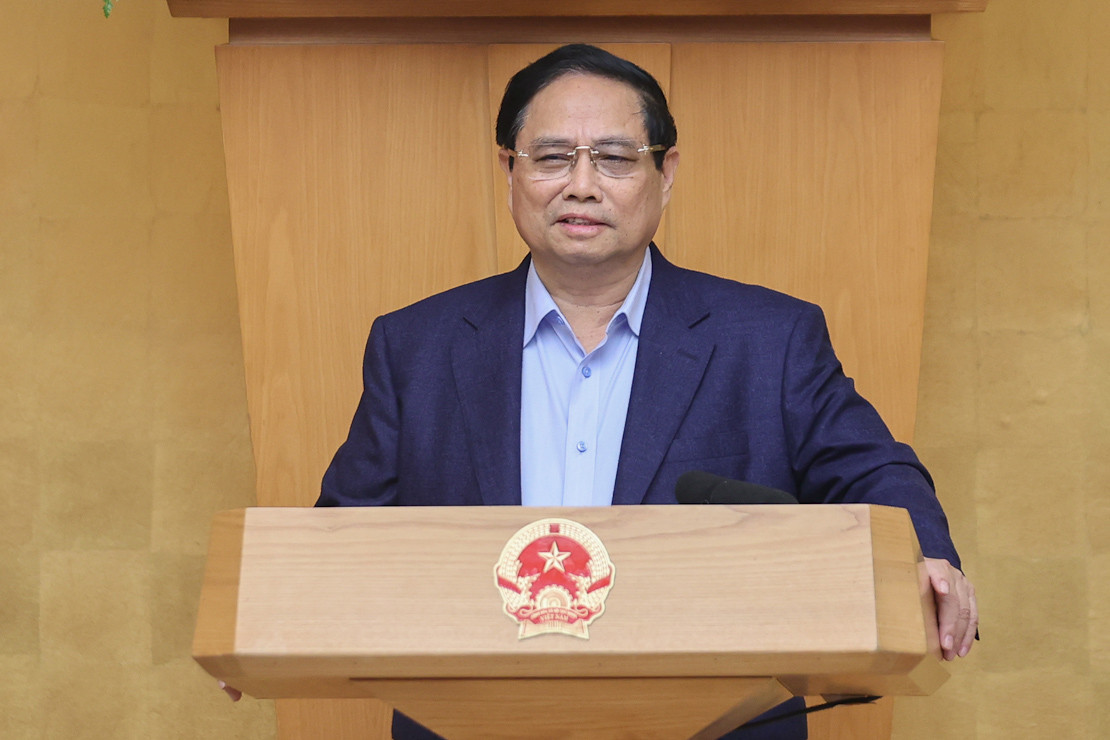At the monthly government meeting on March 5, Prime Minister Pham Minh Chinh emphasized the need to balance regular governance tasks with the ongoing restructuring of state agencies and administrative boundaries, in accordance with the latest directives from the Politburo.

Opening the meeting, the prime minister highlighted the complex and unpredictable global landscape, noting heightened strategic competition, evolving trade and tax policies in several countries, and persistent global economic challenges.
Domestically, the government must simultaneously manage day-to-day operations while advancing organizational restructuring in line with Resolution 18 and preparing for administrative boundary adjustments as mandated by the Politburo’s latest directive.
Another priority is boosting economic growth with a minimum target of 8% in 2025. The government is also tasked with implementing Resolution 57, which focuses on scientific and technological innovation, digital transformation, and organizing major national events.
Maintaining economic stability amid reforms
Prime Minister Pham Minh Chinh affirmed that Vietnam’s macroeconomic stability remains intact, with inflation under control, economic growth on track, and social welfare improving. The country’s political landscape remains stable, with national defense and foreign relations strengthened.
However, he cautioned against complacency, warning that external uncertainties - especially the slow recovery of the global economy - could pose risks to Vietnam, given its developing status, relatively small economic scale, and high exposure to external shocks.
To mitigate these risks, he directed government members and officials to thoroughly evaluate socioeconomic trends over the past two months, identifying achievements, shortcomings, and lessons for both central and local governance. He urged close monitoring of global and domestic developments, ensuring effective policy responses to sustain economic stability, growth momentum, and inflation control.
Alongside routine governance, he stressed the importance of proactively adapting to emerging challenges and swiftly implementing strategic initiatives. He called on officials to propose key leadership and policy priorities to achieve at least 8% GDP growth in 2025, a milestone critical to fulfilling the 2021-2025 five-year development plan. This, he emphasized, would pave the way for Vietnam’s economic and social transformation in the coming decade.
The prime minister outlined several key policy areas requiring close attention, including the rice market situation, monetary and fiscal policies, interest rate management, public investment disbursement, and tax and fee adjustments to support businesses.
Administrative restructuring under Politburo directive
Under Conclusion No. 127, issued on February 28, the Politburo and Party Secretariat have assigned the Government Party Committee to coordinate with the Central Organization Commission, the National Assembly Party Committee, the Vietnam Fatherland Front Party Committee, and other central agencies to develop a plan for merging provincial-level administrative units, eliminating district-level administrations, and further consolidating commune-level units.
The directive also mandates the temporary suspension of district- and commune-level Party congresses. Further guidance from the Politburo will be issued after the 11th Plenary Session of the Party Central Committee.
On March 4, National Assembly Chairman Tran Thanh Man assigned Vice Chairpersons of the National Assembly to lead an urgent review of constitutional and legal amendments necessary for streamlining government structure, in alignment with Conclusion 127.
Tran Thuong